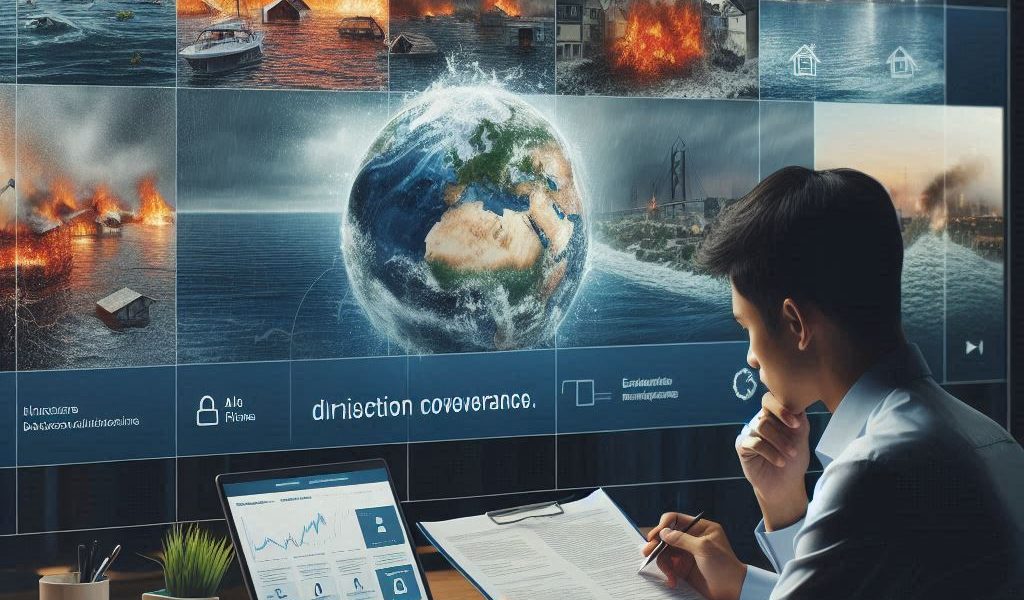Natural disasters are unpredictable events that can cause significant damage to property, infrastructure, and even lives. Earthquakes, floods, hurricanes, tornadoes, and wildfires can strike without warning, and the aftermath can leave homeowners and businesses facing overwhelming financial losses. While it’s impossible to prevent natural disasters from happening, having the right insurance coverage can help protect you from the financial burden caused by these catastrophic events.
In this blog, we’ll explore how you can get insurance coverage for natural disasters, the different types of insurance you should consider, and why it’s crucial to be prepared. Whether you live in a high-risk area or simply want to ensure you’re fully protected, understanding your options and securing the right coverage can make all the difference.
Why Is Natural Disaster Insurance Important?
Natural disasters can cause devastating damage to homes, businesses, and personal property. In the aftermath of such events, insurance can help you recover and rebuild without shouldering the full financial burden. Without adequate insurance coverage, you could be left with expensive repairs, displacement costs, or worse, the total loss of your home or business.
However, not all standard insurance policies cover natural disasters. Standard homeowners or renters insurance may not include coverage for events like floods, earthquakes, or wildfires. That’s why it’s essential to understand what kind of insurance you need to protect yourself from these events.
Types of Insurance Coverage for Natural Disasters
Several types of insurance cover different natural disasters. Below, we’ll break down the coverage options available to you based on the specific risks you face.
1. Flood Insurance
Flooding is one of the most common natural disasters, and unfortunately, it’s not typically covered by standard homeowners or renters insurance policies. If you live in an area prone to floods, you’ll need a separate flood insurance policy to protect your property.
- Where to Get It: Flood insurance is typically offered through the National Flood Insurance Program (NFIP) in the United States. It’s also available through private insurers.
- What It Covers: Flood insurance generally covers damage to your home’s structure and personal belongings, such as furniture, clothing, and electronics. It may also cover temporary living expenses if your home is uninhabitable after a flood.
- Key Considerations: Flood insurance usually has a waiting period before it goes into effect, often 30 days, so it’s important to purchase it well in advance of a potential flood.
2. Earthquake Insurance
Earthquakes can cause catastrophic damage to homes and buildings, especially in areas along major fault lines. Like flood insurance, earthquake coverage is not typically included in a standard homeowners policy, so it’s important to consider purchasing additional coverage if you live in an earthquake-prone area.
- Where to Get It: Earthquake insurance can be obtained through most major insurance companies. In some states, specialized earthquake insurance providers may offer policies.
- What It Covers: Earthquake insurance typically covers the cost of repairs to your home, including structural damage and damage to personal belongings. Some policies may also cover temporary living expenses if you need to relocate due to earthquake damage.
- Key Considerations: Earthquake insurance policies may have high deductibles, and coverage for personal belongings may be limited, so it’s important to read the fine print.
3. Hurricane Insurance
If you live in a coastal area or one that’s prone to hurricanes, it’s essential to have hurricane insurance. While wind damage is typically covered by standard homeowners insurance, storm surge (flooding caused by a hurricane) may require separate flood insurance.
- Where to Get It: Most homeowners policies offer coverage for wind damage, but you may need to add flood coverage through NFIP or private flood insurers.
- What It Covers: Hurricane insurance generally covers wind damage to your home and property, as well as temporary relocation costs. Flood damage caused by hurricanes may require a separate flood policy.
- Key Considerations: Make sure your insurance policy specifically covers hurricane damage, including both wind and flood-related destruction. Keep in mind that there may be waiting periods for certain coverages, especially for flood damage.
4. Wildfire Insurance
Wildfires can destroy homes and businesses in a matter of hours, and areas with a history of wildfires or drought conditions may be at an increased risk. While damage from wildfires is usually covered under a standard homeowners insurance policy, some insurers may exclude fire damage in areas with high risk.
- Where to Get It: Wildfire coverage is typically included in most homeowners policies. However, if you live in a high-risk area, you may need to seek additional coverage or choose a specialized policy that offers more comprehensive protection.
- What It Covers: Wildfire insurance generally covers fire damage to your home and belongings, as well as debris removal and temporary living expenses if your home is uninhabitable.
- Key Considerations: Ensure that your home is protected by proper fire-resistant measures (e.g., fireproof roofing and siding) and that your policy covers the full extent of wildfire-related damage.
5. Tornado Insurance
Tornadoes can cause massive destruction in a very short period, especially in the central United States, also known as “Tornado Alley.” Tornado insurance is usually bundled with standard homeowners insurance, but specific riders may be needed to cover additional damage, such as that caused by flying debris.
- Where to Get It: Tornado coverage is typically included in standard homeowners insurance policies in areas with a higher risk of tornadoes.
- What It Covers: Tornado insurance generally covers damage to your home’s structure, as well as damage to personal belongings. It may also cover the cost of temporary housing if your home is damaged.
- Key Considerations: Tornado insurance policies may include deductibles that are based on a percentage of the home’s value rather than a flat fee, which can affect the cost of repairs after a disaster.
How to Choose the Right Coverage for Natural Disasters
When selecting insurance coverage for natural disasters, consider the following factors:
1. Assess Your Risks
Consider the natural disasters that are most likely to occur in your area. If you live in a flood zone, for example, flood insurance will be a priority. If you’re in an area prone to earthquakes, you’ll need earthquake coverage. Research the history of natural disasters in your region to help determine what coverage you need.
2. Review Your Current Policy
Before purchasing additional coverage, carefully review your current homeowners, renters, or business insurance policy. Understand what is and isn’t covered, and look for exclusions related to natural disasters. This will help you avoid any gaps in coverage.
3. Understand Your Deductibles and Limits
Each type of natural disaster insurance may have its own deductible and coverage limits. Some policies may have higher deductibles for specific types of damage (e.g., flood or earthquake damage), which could affect how much you pay out-of-pocket in the event of a disaster.
4. Compare Policies
Insurance policies can vary greatly in terms of cost and coverage, so it’s important to compare policies from different insurers. Look for the best value in terms of both premiums and coverage limits. Consider working with an insurance broker who can help you navigate your options and find the best coverage for your needs.
5. Plan Ahead
Since many natural disaster insurance policies have waiting periods, make sure to plan ahead and purchase coverage well in advance. Don’t wait until a disaster is imminent to secure insurance. The sooner you secure coverage, the better prepared you’ll be if disaster strikes.
Conclusion
Insurance coverage for natural disasters is a crucial part of protecting your home, business, and personal property. Whether you’re in a flood zone, an earthquake-prone area, or an area susceptible to wildfires, there are specialized policies available to help you recover from these catastrophic




